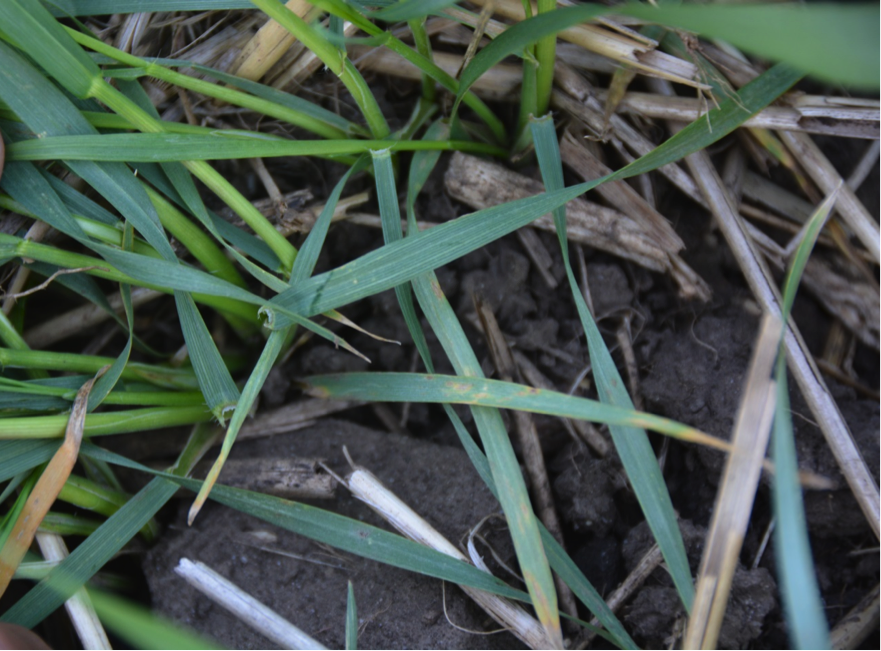By Emmanuel Byamukama, Extension Plant Pathologist
There have been a few reports of stripe rust developing on winter wheat this fall in central and western regions of South Dakota. Fungal leaf spots, such as tanspot, have also been reported (see photo). The mild fall weather we are currently experiencing have led these diseases to develop, and growers are asking, is it worth applying a fungicide to winter wheat this fall?
What is the Effectiveness of Fall Applications?
There is very little research showing the effect of a fall foliar fungicide application on winter wheat yield. The general consensus is that such an application would not result in an increased yield benefits.
One of the reasons for not recommending a fungicide application at this time is that the leaves being protected would soon die as winter temperatures dip. Stripe rust develops under wet and cool (45-59 F) conditions but infection is limited when temperatures fall below 32 F.
Tan spot has a wide range of temperatures at which it can infect wheat (59-90 F) but infection occurs mostly on older leaves and at least 6 hours of leaf wetness is required. Under cooler conditions, longer leaf wetness periods are required for infection (up to 48 hours).
When to Apply?
 Tan spot developing on lower leaves. Notice also straw residue, which is the source of the disease.
Tan spot developing on lower leaves. Notice also straw residue, which is the source of the disease.






Post a comment
Report Abusive Comment